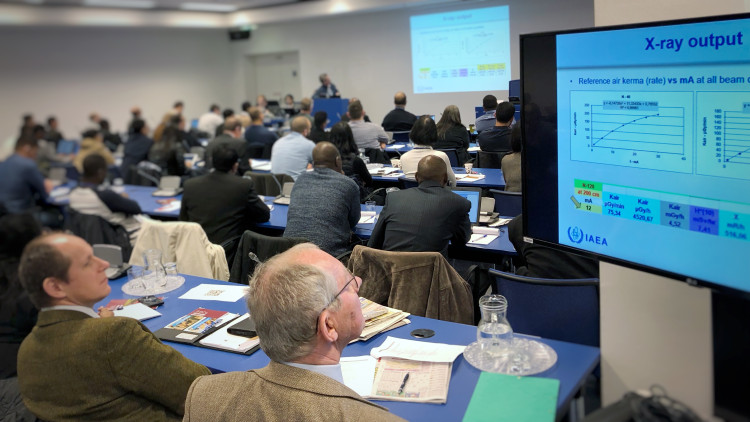For patients, the public and workers exposed to radiation, measuring their dose is paramount. To promote standardization worldwide, more than 100 specialists from 65 countries gathered at the International Atomic Energy Agency (IAEA) this week for the largest-ever training course on establishing and managing laboratories that provide calibrations for dosimeters—the devices that are used to measure and detect radiation.
Organized by the IAEA, the course was part of a series of activities coordinated with the World Health Organization (WHO) to support a network of 86 dosimetry laboratories in 72 countries. The network aims to exchange information and provide international traceability and standardization in calibrations and other related services. It also facilitates access to high quality dosimetry calibration services in developing nations.
"In scope and reach, this training represents a milestone in our efforts to boost dosimetry capabilities in countries worldwide,” said Paula Toroi, a medical radiation specialist at the IAEA.
Participants in the weeklong course gained important knowledge in establishing and managing the laboratories, whose main tasks are calibrating, evaluating and certifying the response of dosimeters. Accurate dosimetry is essential to ensure quality in medical radiation therapy and diagnostics. Dosimetry is also important for radiological devices in industrial applications and for instruments measuring radiation in the environment.
To ensure consistent and accurate clinical dosimetry, all dosimeters need to be regularly calibrated. This is achieved, in part, by performing a cross-check against a national reference standard that is maintained by each of the network’s dosimetry laboratories. As part of its assistance, the IAEA Dosimetry Laboratory provides the laboratory network with calibrations of their reference standards free of charge—an important service for developing nations, some of which are seeking to set up their first dosimetry laboratory.
“This training and the IAEA/WHO SSDL network in general provide us with vital know-how for our plan to establish such a laboratory,” said May OO Khaing, a course participant from Myanmar’s Ministry of Education.
Participants in the training included dosimetry and calibration professionals such as radiation metrologists, physicists and technicians. Besides being the world’s largest training of its kind to date, the course was also the first to incorporate all aspects of managing the laboratories, known as Secondary Standard Dosimetry Laboratories (SSDL), including applying International Organization for Standardization (ISO) quality standards.
“The community that maintains dosimetry measurement standards is a small, highly specialized community. To exchange knowledge and experience, experts have no other choice than to look beyond borders,” said Luis Santos, a participant from Portugal’s Instituto Superior Técnico. “This training course as well as the IAEA/WHO SSDL network in general offers very specific, unique knowledge which cannot be found anywhere else.”


